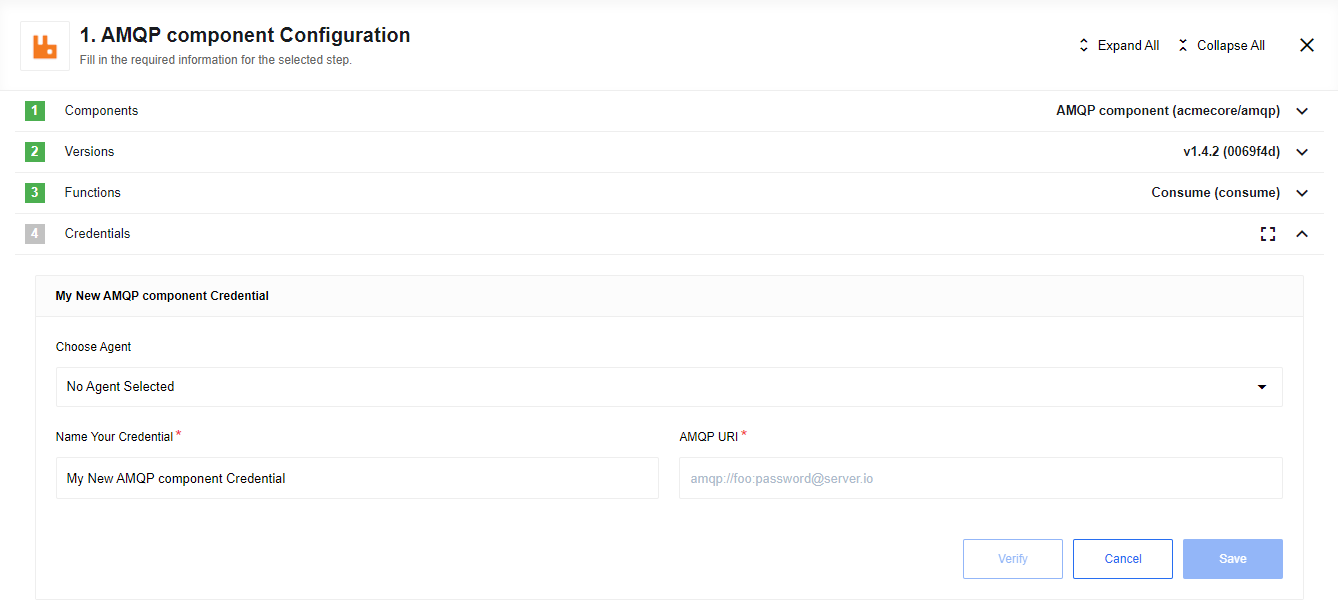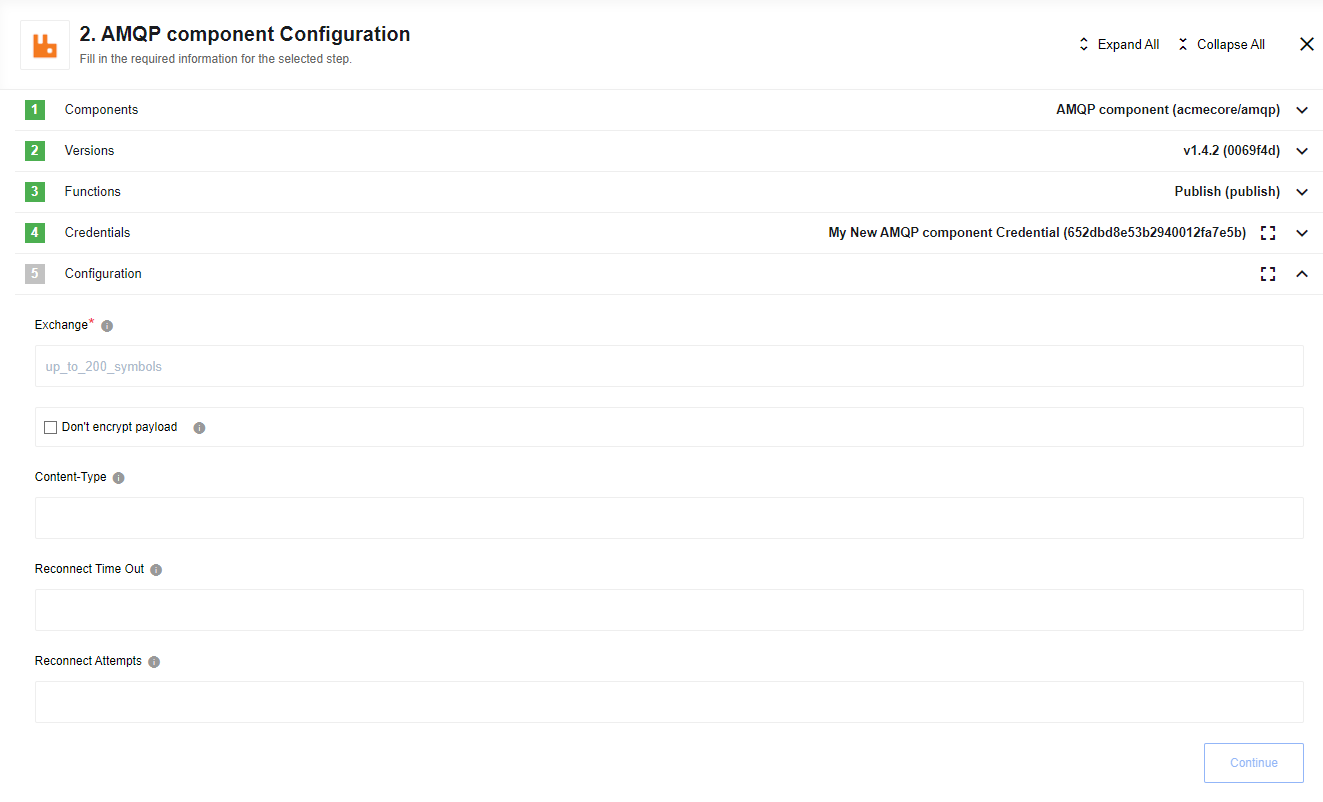AMQP component
Description
A component designed to talk to Advanced Message Queuing Protocol, (AMQP) APIs. AMQP is an open standard for passing business messages between applications or organizations (see amqp.org for more). AMQP component establishes an asynchronous communications with queues and topics to publish or consume records.
How it works
The consumer will register a non-exclusive non-durable queue with autodelete=true and without any dead-letter. Name of the queue will be dynamically generated based on the USER_ID, FLOW_ID prefixed with eio_consumer_. This queue will be bound to the exchange with specified bound key or multiple bound keys that are specified in one string separated by commas.
Requirements
Environment variables
This component will automatically encrypt data that is sent to the queue when following environment variables are set and Don't encrypt payload unchecked.
ELASTICIO_MESSAGE_CRYPTO_IV- vector for symmetric encryption.ELASTICIO_MESSAGE_CRYPTO_PASSWORD- password for symmetric encryption.
These variables are by default available in the platform environment. Data will be encrypted using symmetric AES-256 encryption.
Credentials
This component expects user to provide a AMQP URL, username and password should be embedded as part of the URL, for example amqp://foo:bar@server. You can also use URL syntax to provide further parameters and any other options (e.g. vHost or port).
Triggers
Consume
Will consume the incoming message object that contains body with the payload.
If the exchange doesn’t exist it will be created on start.
Limitations:
- SUPPORTS REALTIME FLOWS ONLY. Otherwise, errors may appear. We recommend you set the lowest flow schedule (cron expression) frequency possible. E.g. once a day (0 0 * * *). And start the flow with the button ‘Run Now’ manually. Even though it does not affect the logic directly, each scheduled flow execution will create a record in the Executions list and can make debugging difficult. All the logs and emitted messages will be appearing in the last execution.
- Due to API limitations, once the user clicks
Run Nowafter the SUSPENDED state, all stored messages in the queues will be processed, but not in the order they were received.
Configuration Fields
- Exchange - (string, required): Exchange name where you want to get messages.
- Binding Keys - (string, optional): Optionally you can use
#or*to wildcard. For more information check the tutorial provided at the RabbitMQ site. - Don’t decrypt payload - (checkbox, optional): If checked payload will be not decrypted.
- Reconnect Timeout - (string, optional, 5 by default, maximum 1000): In case of errors how long to wait until retry is seconds.
- Reconnect Attempts - (string, optional, 12 by default, maximum 1000): How many times try to reconnect before throw error.
Actions
Publish
Will publish the messages into an exchange. This exchange will be created on start if it doesn’t exists.
Configuration Fields
- Exchange - (string, required): Exchange name where you want to send message to.
- Don’t encrypt payload - (checkbox, optional): If checked payload will be not encrypted.
- Content-Type - (string, optional): Content-Type of pushed payload, default is
application/octet-stream. - Reconnect Timeout - (string, optional, 5 by default, maximum 1000): In case of errors how long to wait until retry is seconds.
- Reconnect Attempts - (string, optional, 12 by default, maximum 1000): How many times try to reconnect before throw error. 12 by default.
Technical Notes
The technical notes page gives some technical details about AMQP component like changelog.
Known limitations
Following limitations of the component are known:
- You can not publish to the default exchange.
- All published exchanges are
topicexchanges by default. However, with thetopicexchanges one can emulatedirectandfanoutexchanges.
Click here to learn more about the elastic.io iPaaS


